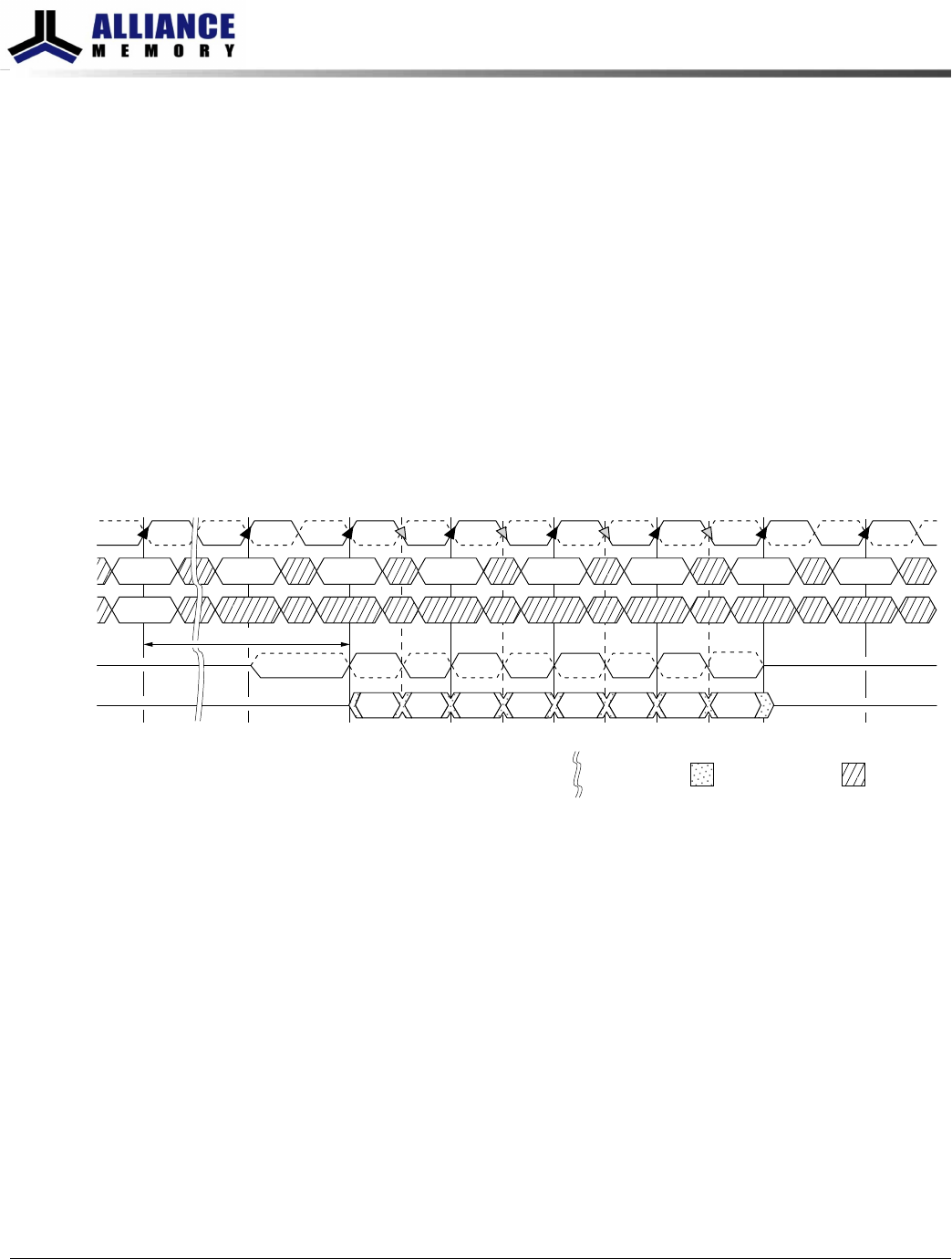Datasheet
Table Of Contents
- DDR3L SDRAM
- Description
- State Diagram
- Functional Description
- Functional Block Diagrams
- Ball Assignments and Descriptions
- Package Dimensions
- Electrical Specifications
- Thermal Characteristics
- Electrical Specifications – I DD Specifications and Conditions
- Electrical Characteristics – 1.35V IDD Specifications
- Electrical Specifications – DC and AC
- ODT Characteristics
- Output Driver Impedance
- Output Characteristics and Operating Conditions
- Speed Bin Tables
- Electrical Characteristics and AC Operating Conditions
- Electrical Characteristics and AC Operating Conditions
- Command and Address Setup, Hold, and Derating
- Data Setup, Hold, and Derating
- Commands – Truth Tables
- Commands
- Input Clock Frequency Change
- Write Leveling
- Initialization
- Voltage Initialization / Change
- Mode Registers
- Mode Register 0 (MR0)
- Mode Register 1 (MR1)
- Mode Register 2 (MR2)
- Mode Register 3 (MR3)
- MODE REGISTER SET (MRS) Command
- ZQ CALIBRATION Operation
- ACTIVATE Operation
- READ Operation
- WRITE Operation
- PRECHARGE Operation
- SELF REFRESH Operation
- Extended Temperature Usage
- Power-Down Mode
- RESET Operation
- On-Die Termination (ODT)
- Dynamic ODT
- Synchronous ODT Mode
- Asynchronous ODT Mode
- Asynchronous to Synchronous ODT Mode Transition (Power-Down Exit)

READ Operation
READ bursts are initiated with a READ command. The starting column and bank ad-
dresses are provided with the READ command and auto precharge is either enabled or
disabled for that burst access. If auto precharge is enabled, the row being accessed is
automatically precharged at the completion of the burst. If auto precharge is disabled,
the row will be left open after the completion of the burst.
During READ bursts, the valid data-out element from the starting column address is
available READ latency (RL) clocks later. RL is defined as the sum of posted CAS additive
latency (AL) and CAS latency (CL) (RL = AL + CL). The value of AL and CL is programma-
ble in the mode register via the MRS command. Each subsequent data-out element is
valid nominally at the next positive or negative clock edge (that is, at the next crossing
of CK and CK#). Figure 65 shows an example of RL based on a CL setting of 8 and an AL
setting of 0.
Figure 65: READ Latency
CK
CK#
Command
READ NOP NOP NOP NOP NOP NOP NOP
Address
Bank a,
Col n
CL = 8, AL = 0
DQ
DQS, DQS#
DO
n
T0 T7 T8 T9 T10 T11
Don’t Care
Transitioning Data
T12 T12
Indicates break
in time scale
Notes:
1. DO n = data-out from column n.
2. Subsequent elements of data-out appear in the programmed order following DO n.
DQS, DQS# is driven by the DRAM along with the output data. The initial LOW state on
DQS and HIGH state on DQS# is known as the READ preamble (
t
RPRE). The LOW state
on DQS and the HIGH state on DQS#, coincident with the last data-out element, is
known as the READ postamble (
t
RPST). Upon completion of a burst, assuming no other
commands have been initiated, the DQ goes High-Z. A detailed explanation of
t
DQSQ
(valid data-out skew),
t
QH (data-out window hold), and the valid data window are de-
picted in Figure 76 (page 161). A detailed explanation of
t
DQSCK (DQS transition skew
to CK) is also depicted in Figure 76 (page 161).
Data from any READ burst may be concatenated with data from a subsequent READ
command to provide a continuous flow of data. The first data element from the new
burst follows the last element of a completed burst. The new READ command should be
issued
t
CCD cycles after the first READ command. This is shown for BL8 in Figure 66
(page 155). If BC4 is enabled,
t
CCD must still be met, which will cause a gap in the data
output, as shown in Figure 67 (page 155). Nonconsecutive READ data is reflected in
8Gb: x4, x8, x16 DDR3L SDRAM
READ Operation
153
Rev 2.0 June 2016
© 2015 Alliance Memory, Inc. All rights reserved.
Alliance Memory Inc. reserves the right to change products or specification without notice
Alliance Memory Inc. 511 Taylor Way, San Carlos, CA 94070
TEL: (650) 610-6800 FAX: (650) 620-9211










